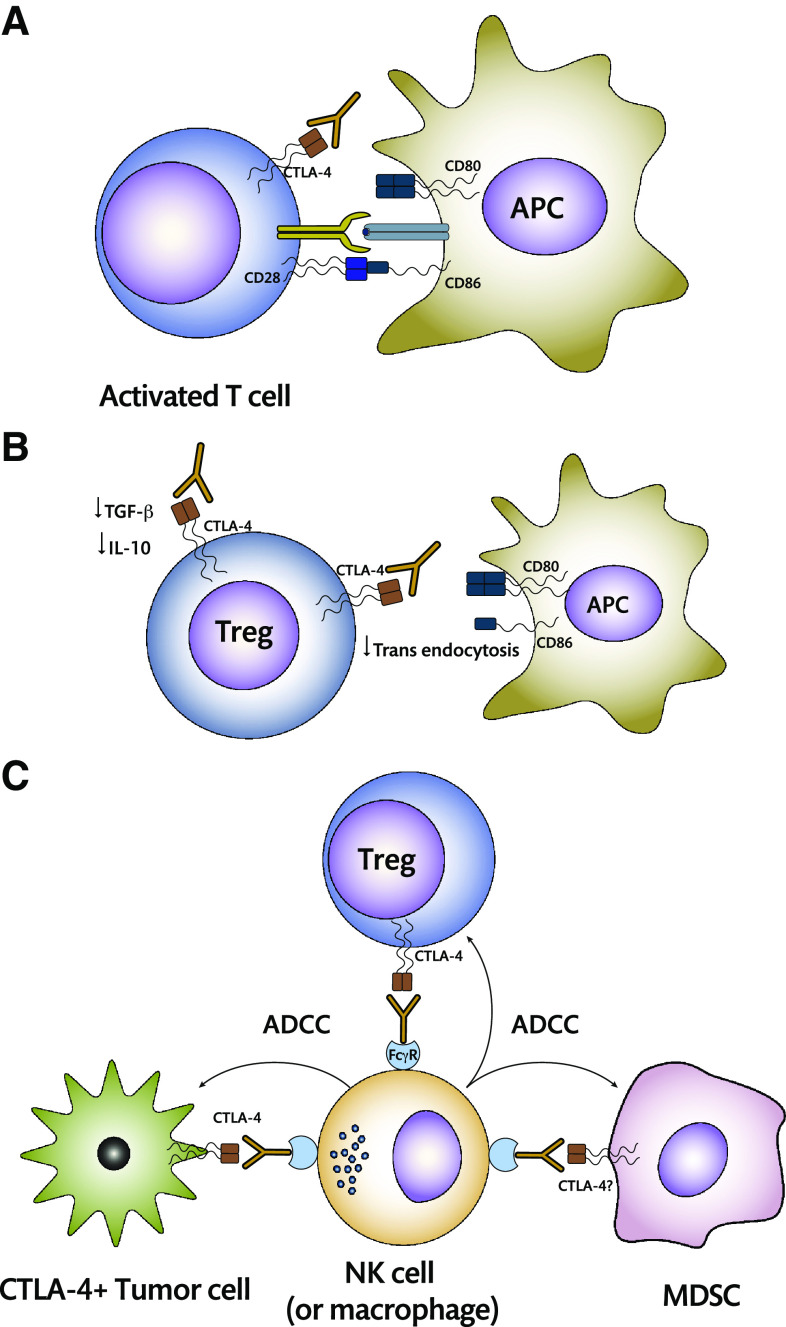Fig. 1.
Mechanisms of action of CTLA-4 blockade. a Anti-CTLA-4 may be acting directly or in cis on effector T cells by impeding CTLA-4 intracellular signaling that takes place when it binds to its ligand. In addition to this, availability of CD80 and CD86 on the APC surface will be increased, allowing for direct activation after co-stimulatory signals are delivered by CD28 signaling. b In trans mechanisms involve the binding of the antibody to CTLA-4 on the surface of Tregs, decreasing production of inhibitory cytokines, and preventing transendocytosis of CD80 and CD86. c ADCC has been recently suggested as a possible mechanism of action for CTLA-4 blockade. It may involve Treg depletion or directly eliminate CTLA-4+ tumor cells. The possibility that MDSCs may express CTLA-4 on their surface is currently under debate and may provide an additional pathway toward α-CTLA-4-mediated activation

